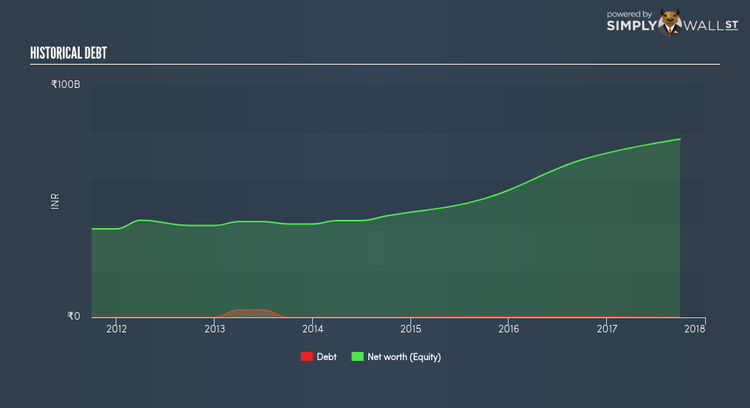Has Siemens Limited (NSE:SIEMENS) Got Enough Cash To Cover Its Short-Term Obligations?

Small-cap and large-cap companies receive a lot of attention from investors, but mid-cap stocks like Siemens Limited (NSEI:SIEMENS), with a market cap of ₹468.32B, are often out of the spotlight. However, history shows that overlooked mid-cap companies have performed better on a risk-adjusted manner than the smaller and larger segment of the market. SIEMENS’s financial liquidity and debt position will be analysed in this article, to get an idea of whether the company can fund opportunities for strategic growth and maintain strength through economic downturns. Note that this information is centred entirely on financial health and is a top-level understanding, so I encourage you to look further into SIEMENS here. See our latest analysis for Siemens
Does SIEMENS face the risk of succumbing to its debt-load?
Debt-to-equity ratio standards differ between industries, as some are more capital-intensive than others, meaning they need more capital to carry out core operations. A ratio below 40% for mid-cap stocks is considered as financially healthy, as a rule of thumb. For SIEMENS, the debt-to-equity ratio is zero, meaning that the company has no debt. It has been operating its business with zero debt and utilising only its equity capital. Investors’ risk associated with debt is virtually non-existent with SIEMENS, and the company has plenty of headroom and ability to raise debt should it need to in the future.
Can SIEMENS meet its short-term obligations with the cash in hand?
Given zero long-term debt on its balance sheet, Siemens has no solvency issues, which is used to describe the company’s ability to meet its long-term obligations. However, another measure of financial health is its short-term obligations, which is known as liquidity. These include payments to suppliers, employees and other stakeholders. Looking at SIEMENS’s most recent ₹51,853.0M liabilities, the company has maintained a safe level of current assets to meet its obligations, with the current ratio last standing at 1.98x. For Industrials companies, this ratio is within a sensible range since there’s sufficient cash cushion without leaving too much capital idle or in low-earning investments.
Next Steps:
SIEMENS has no debt in addition to ample cash to cover its short-term liabilities. Its safe operations reduces risk for the company and shareholders, though, some degree of debt may also ramp up earnings growth and operational efficiency. This is only a rough assessment of financial health, and I’m sure SIEMENS has company-specific issues impacting its capital structure decisions. I recommend you continue to research Siemens to get a more holistic view of the stock by looking at:
1. Future Outlook: What are well-informed industry analysts predicting for SIEMENS’s future growth? Take a look at our free research report of analyst consensus for SIEMENS’s outlook.
2. Valuation: What is SIEMENS worth today? Is the stock undervalued, even when its growth outlook is factored into its intrinsic value? The intrinsic value infographic in our free research report helps visualize whether SIEMENS is currently mispriced by the market.
3. Other High-Performing Stocks: Are there other stocks that provide better prospects with proven track records? Explore our free list of these great stocks here.
To help readers see pass the short term volatility of the financial market, we aim to bring you a long-term focused research analysis purely driven by fundamental data. Note that our analysis does not factor in the latest price sensitive company announcements.
The author is an independent contributor and at the time of publication had no position in the stocks mentioned.

